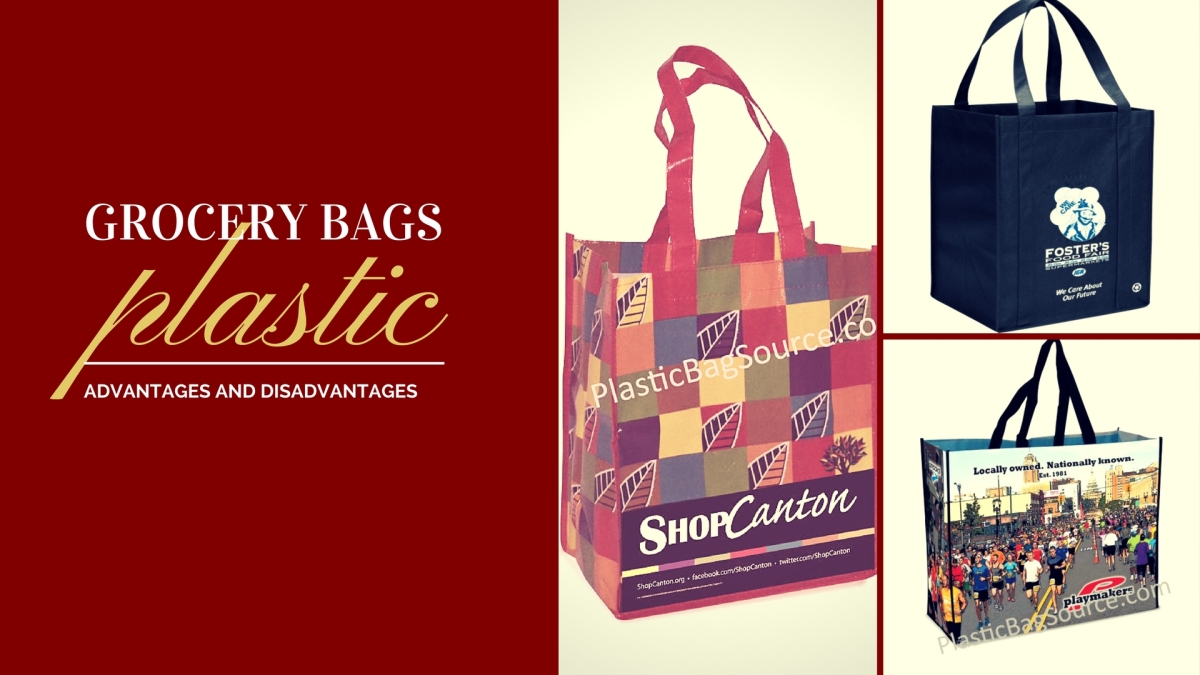
On an average, a family of four uses around 60 plastic grocery bags every month.
This very fact is enough to understand the extent to which we depend on these carry bags on our day to day life. But why is that many countries have imposed a ban on plastic bags?
Why there is so much debate about the advantages and disadvantages of using these bags?
Should we completely stop using them?
Answers to all these questions are summed up in the below article!
Read further to know about various factors that help us to arrive at the advantages and disadvantages of using plastic grocery bags.
Latest Manufacturing Process
Here is a brief about the latest method used for manufacturing plastic carry bags. The process is known as a blown-film extrusion process. In this process, resin (small plastic pellets) are melted under controlled heat circumstances. This is carried out until resins become molten and pliable.
As a next step, they are extruded through a circular die gap. This leads to the formation of a continuous tube of plastic. The tube is pinched off at one end to and then it is inflated and stretched to the size and thickness of the desired finished product.
Types of Plastic Carry Bags
Plastic bags are a form of polymers. Depending on various factors of the polymer used in manufacturing the plastic bags, they are classified into four main categories. Let us discuss these categories in details; they are as follows:
1. High-Density Polyethylene (HDPE)
HDP is the most commonly used variant of plastic bags in most parts of the world. They are water and temperature resistant, lightweight, relatively transparent and high in tensile strength. These bags meet the USDA and FDA food handling guidelines.
2. Low-Density Polyethylene (LDPE)
They are completely transparent, thus ideal to be used in commercial kitchens. The common applications of LDPE bags are food bags, bread bags, and utility bags. They have a medium strength and stretch properties.
3. Linear Low-Density Polyethylene (LLDPE)
LLDPE has a thinner gauge as compared to LDPE. But there is no much difference in strength between LDPE and LLDPE. Thus consumers can have the same quality at a lower price by purchasing the LLDPE bags. They are mainly used as plastic shopping bags.
4. Medium Density Polyethylene (MDPE)
The transparency of MDPE bags lies between that of HDPE and LDPE bags. They are the least stretchable plastic bags, and also they have poor strength. This makes unsuitable to carry or store bulk products. They are used to pack lighter products and as garbage bags.
5. Polypropylene
PP stands unique by their property of great chemical strength and resistance. This is the only variant of plastic bags that is non-breathable. Therefore, they have a longer shelf life and are used to pack herbs, nuts, candies and other confectionaries.
Now after getting familiar with all the important information related to plastic grocery shopping bags we will move on to their advantages and disadvantages.
Advantages of using Plastic Grocery Bags
1. Easy Recycling
The two most prominent variants of carrying bags are the plastic bags and paper bags. Both of them have extremely low rates of recycling. As responsible individuals, we all must strive hard to increase the rate of recycling of either type of bags. But almost 91% less energy is required to recycle a pound of plastic as compared to a pound of paper bags.
2. Cost efficiency
When purchased in bulk each plastic bag costs a small fraction of a cent per piece. But prices of paper bags start from 5 cents per piece. Lately, cloth bags are gaining wide popularity as they are a better option for reusability and environmental concerns. Each of these cloth bags costs up to a few dollars each.
Therefore, for large-scale consumers of carrying bags, plastic bags are a more viable option. Only in case of domestic purpose people can opt to buy either paper or cloth bags depending on the requirement.
3. Reusability
Most of us will have a big plastic bag that contains several other plastic bags at home. These bags are saved on multiple shopping occasions for reuse. They are used to store miscellaneous items, as a trash can liners, or to pack things. Plastic bags can also be rinsed out and repurposed.
Disadvantages of Using Plastic Grocery Bags
1. Threat to various animals
Many times we carelessly throw used plastic bags in our surroundings. Animals like stray dogs, cows, buffaloes, pigs and so on eat them when they walk around looking for food. In case of improper disposal, they might enter the nearest water bodies, which again cause a threat to the marine animals. A report from EPA states this happens when plastic bags are washed into sewers, streams, and storm drains.
2. They use nonrenewable resources
Polyethylene-based polymers are the most common raw material for plastic bags. Polyethylene is derived as byproducts of petroleum refining such as crude oil and natural gas. All the petroleum substances are a non-renewable source of energy. They will get exhausted shortly. And also the petroleum refining process creates a lot of environmental pollution.
3. Other Major Effects of Environment
On an average, around 100 million to one trillion plastic bags are used around the world every year. Only 1%-3% of these bags reach the recycling point. Majority of them enter the waste stream. Each of these bags takes no less than a thousand years to decompose. As the concentration of these bags increases, the rate of decomposition decreases. This is the major drawback of using plastic bags.
It is practically difficult to stop the usage of plastic bags from all walks of life. There is also a need for the invention of a viable substitute.
We can overcome most of the disadvantages by recycling most of the plastic bags we use.
Take precautions to not throw them carelessly in your surroundings.
Leave your opinions and suggestions in the comments section below!